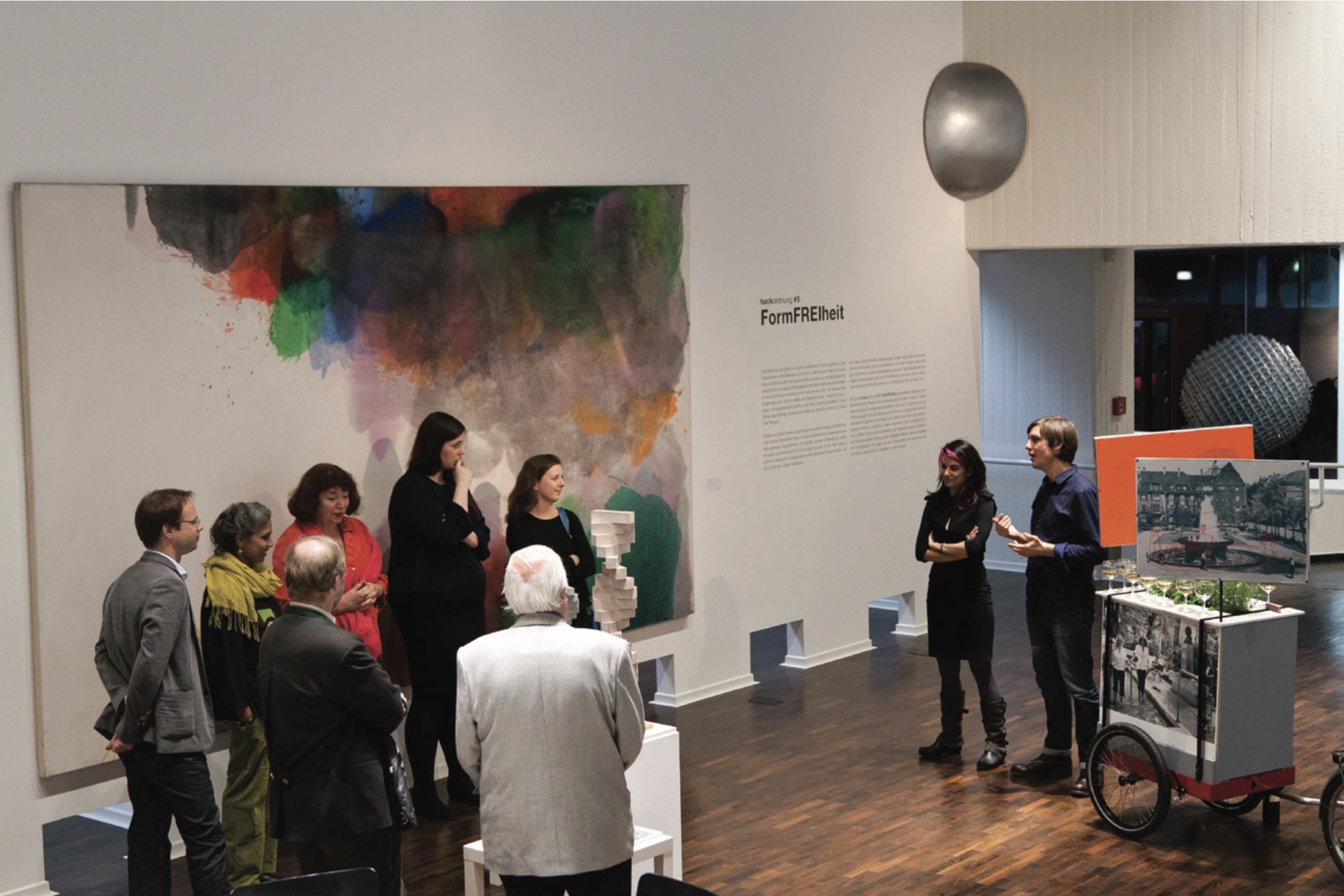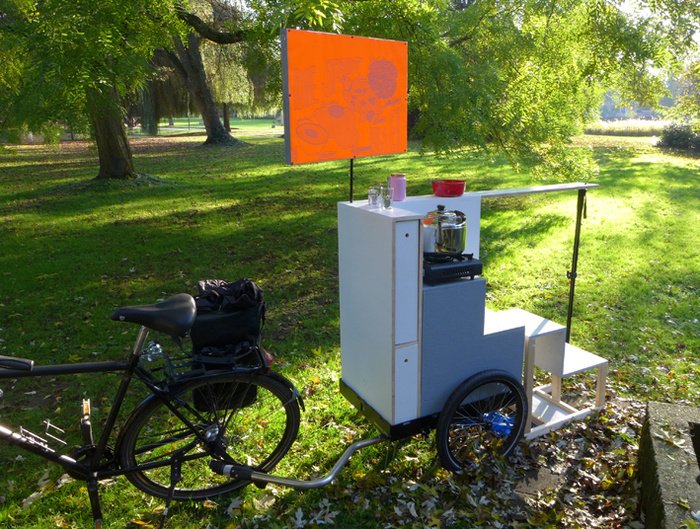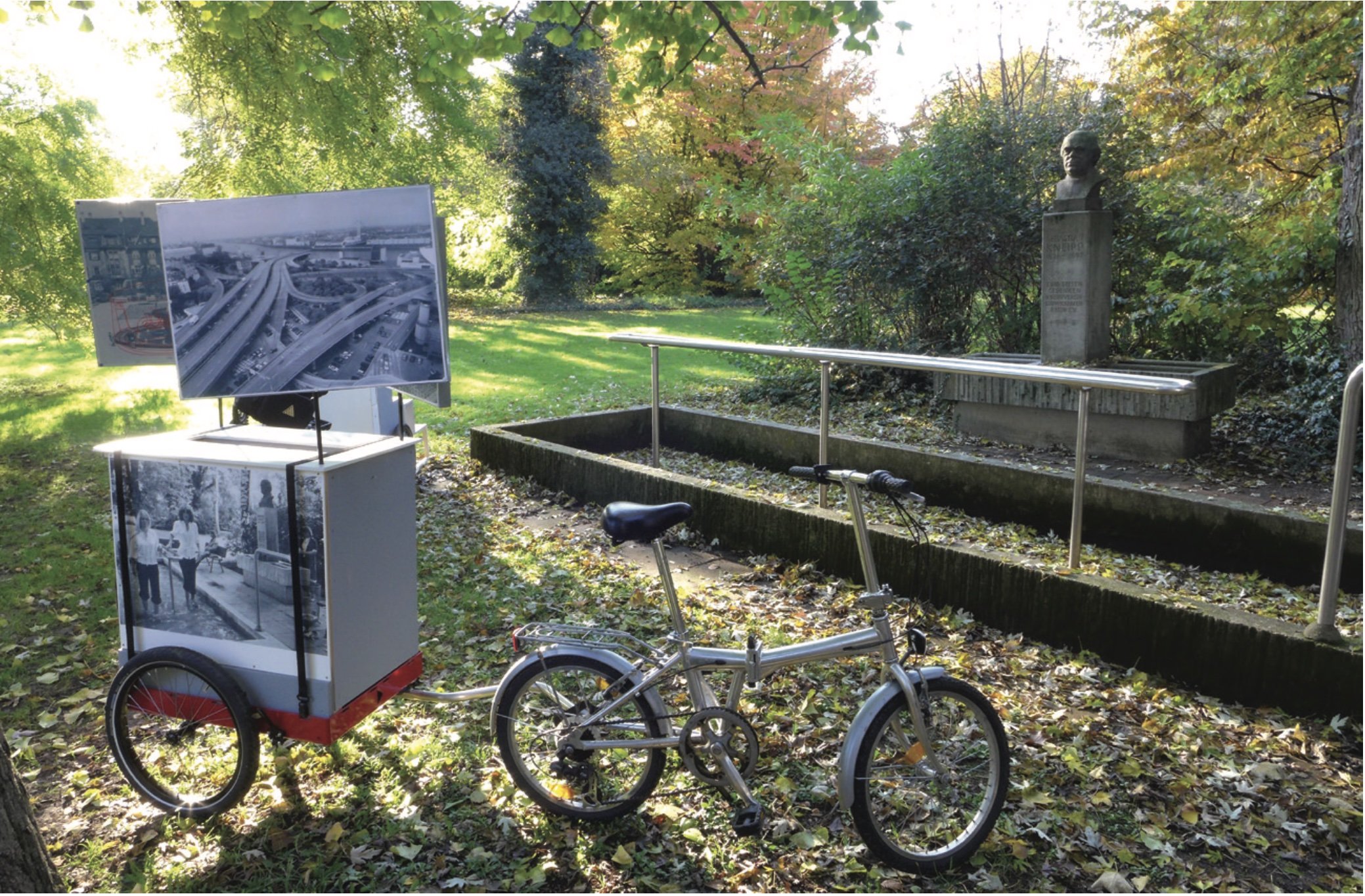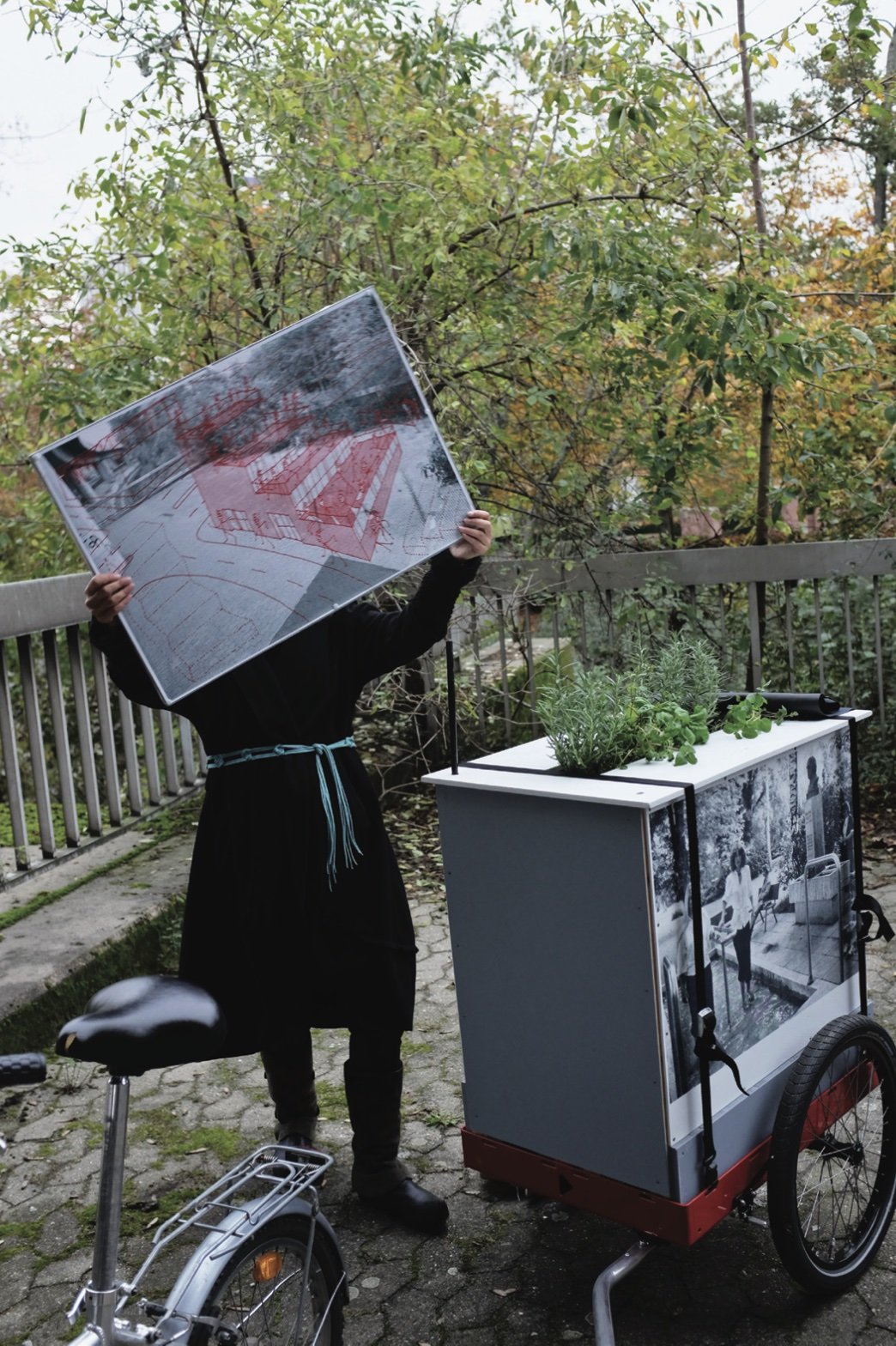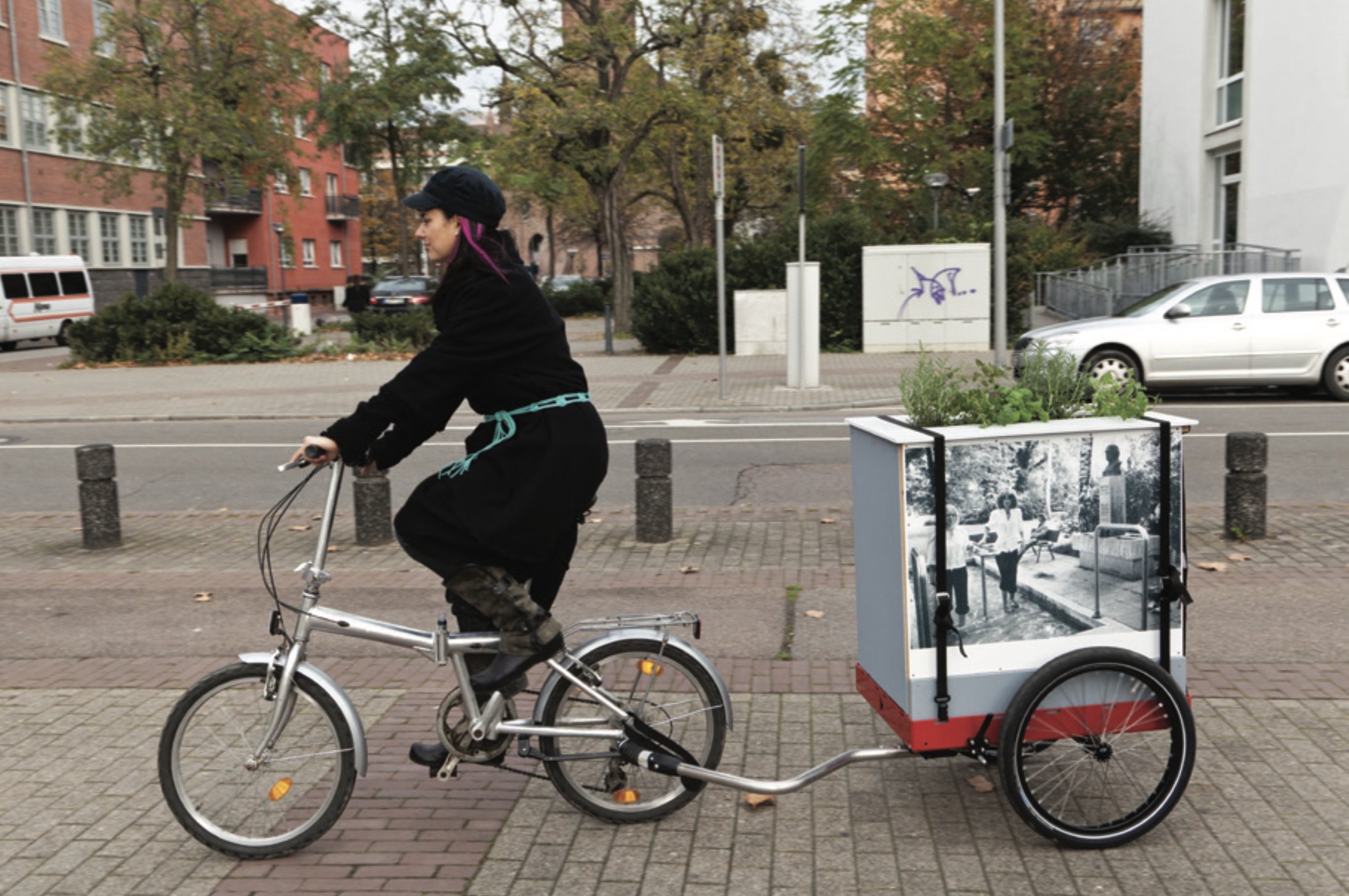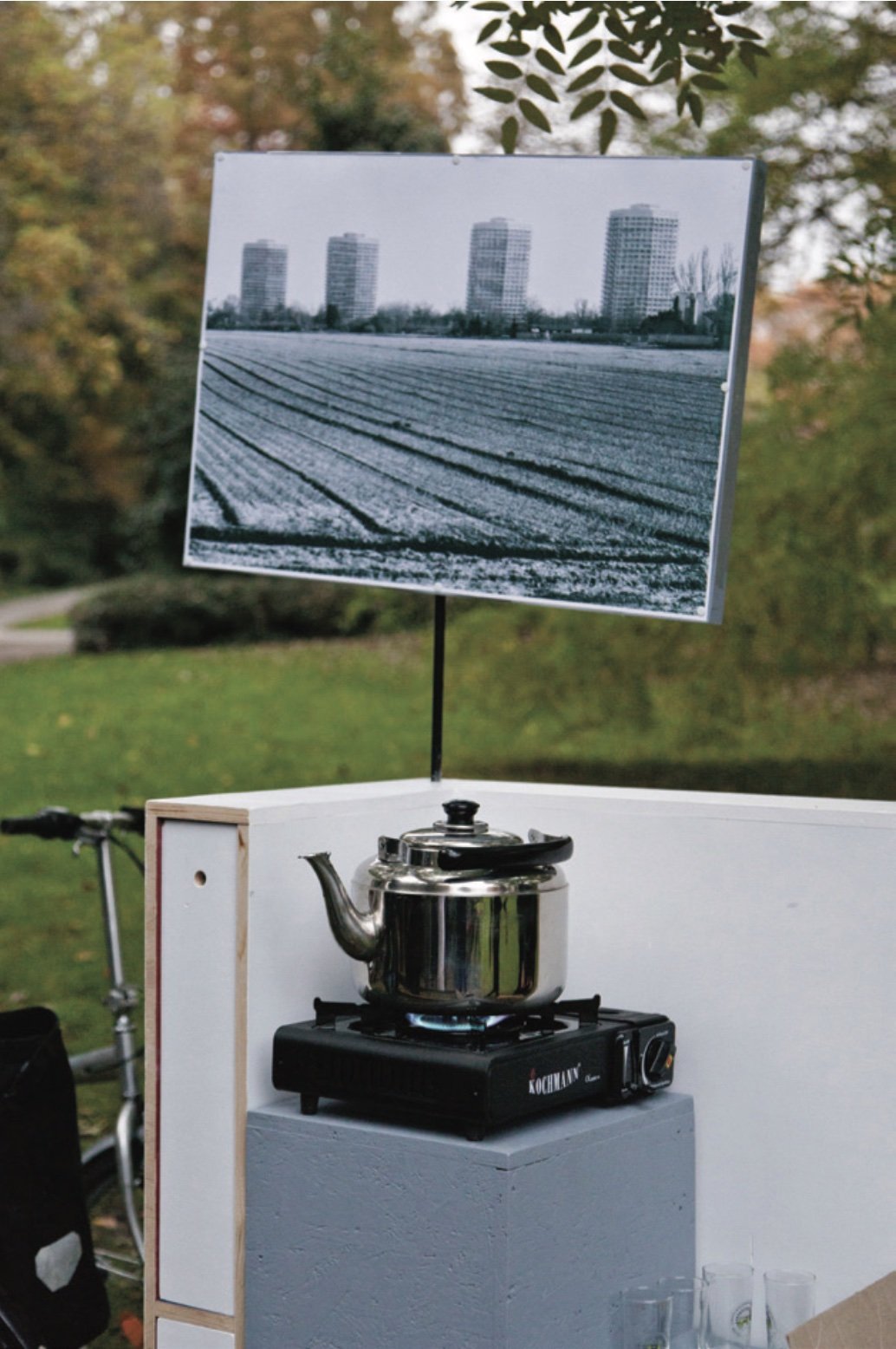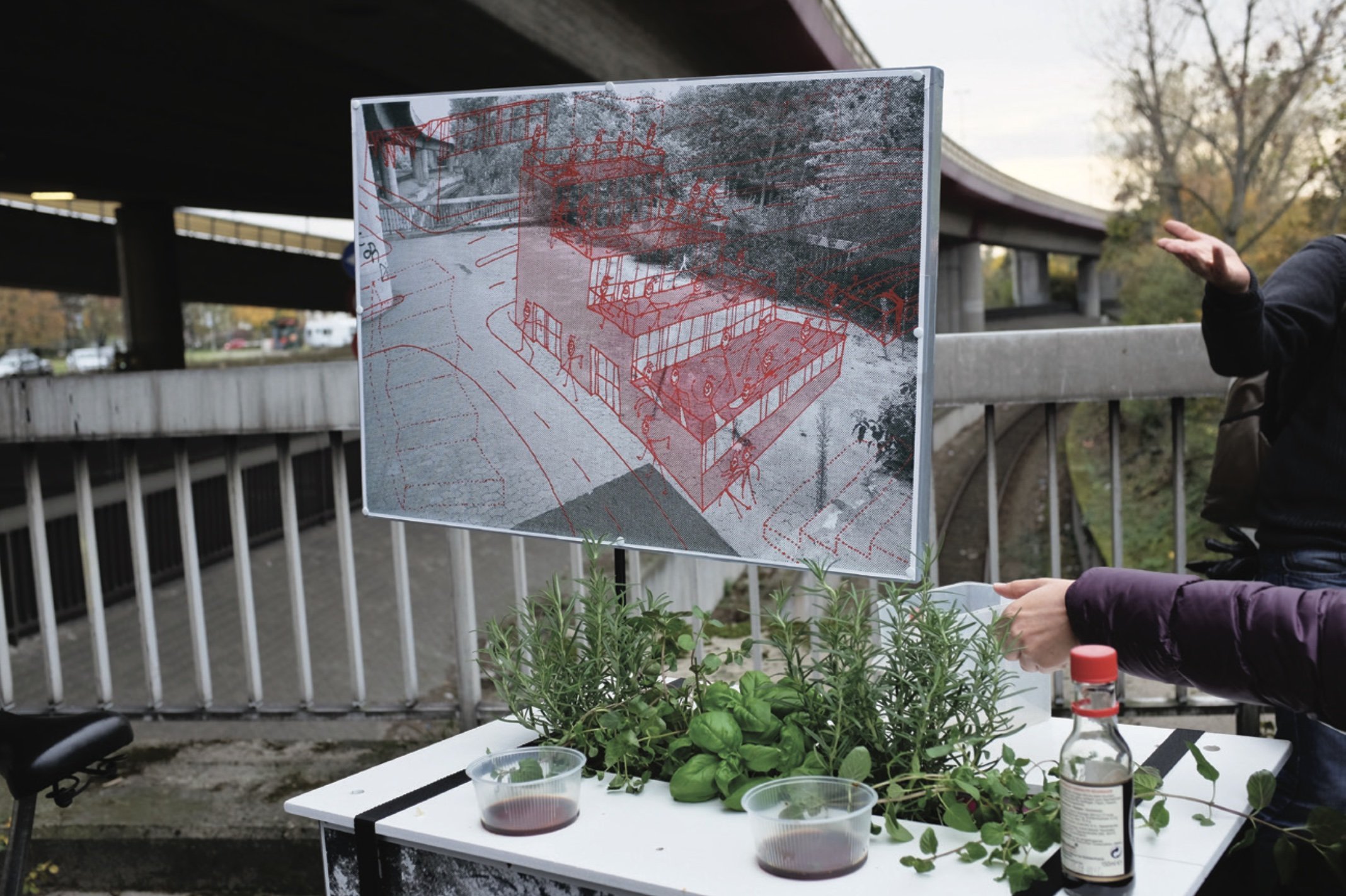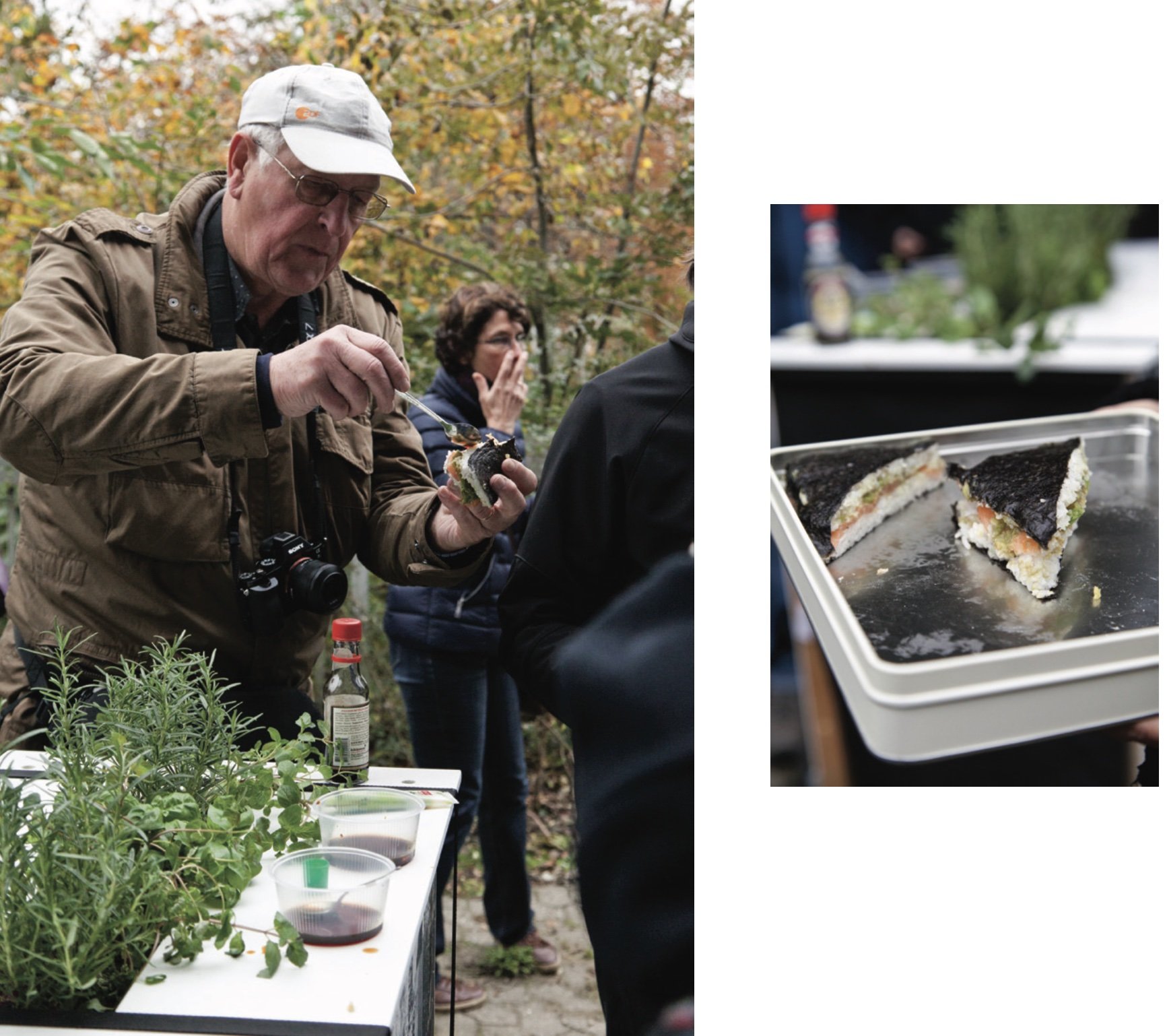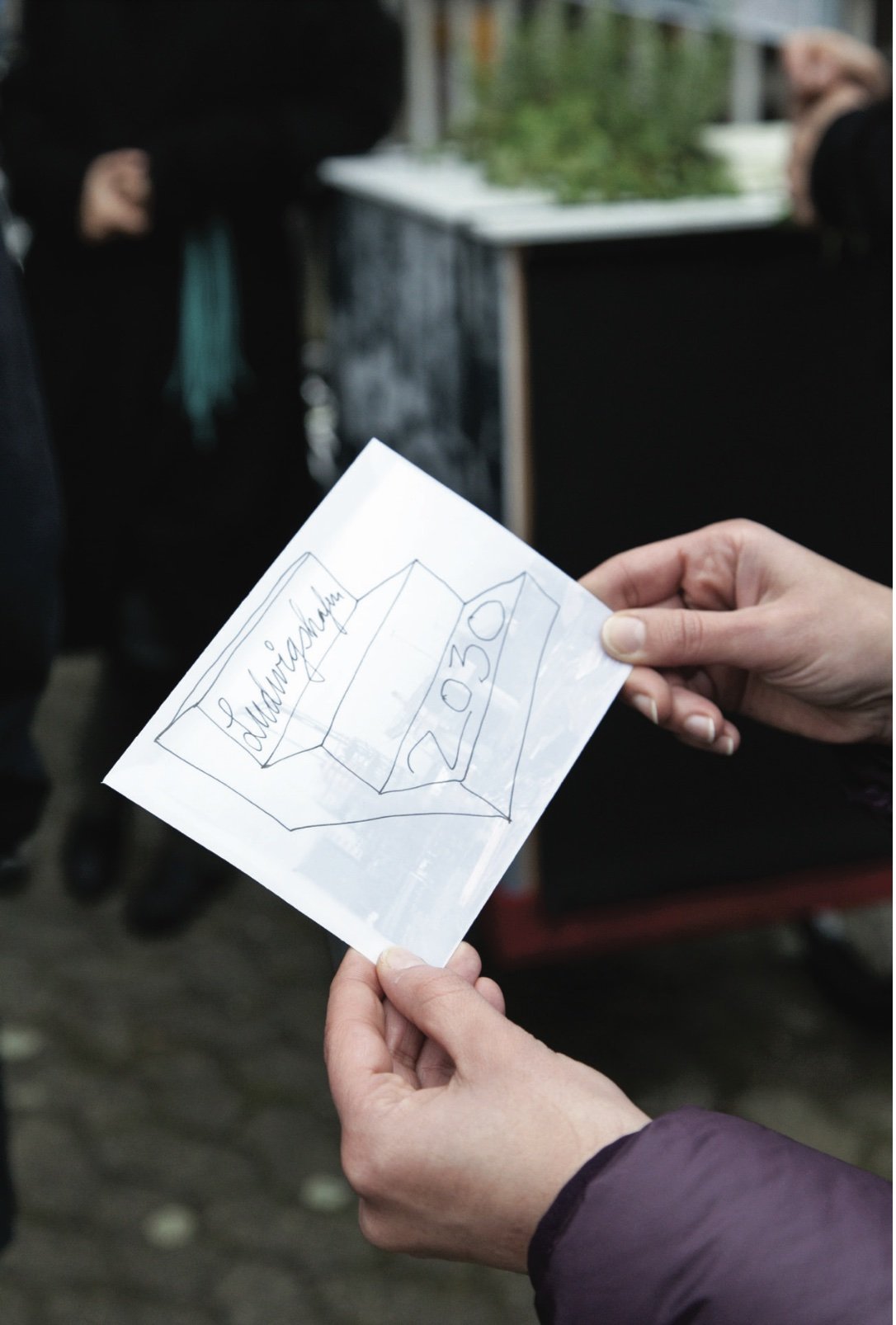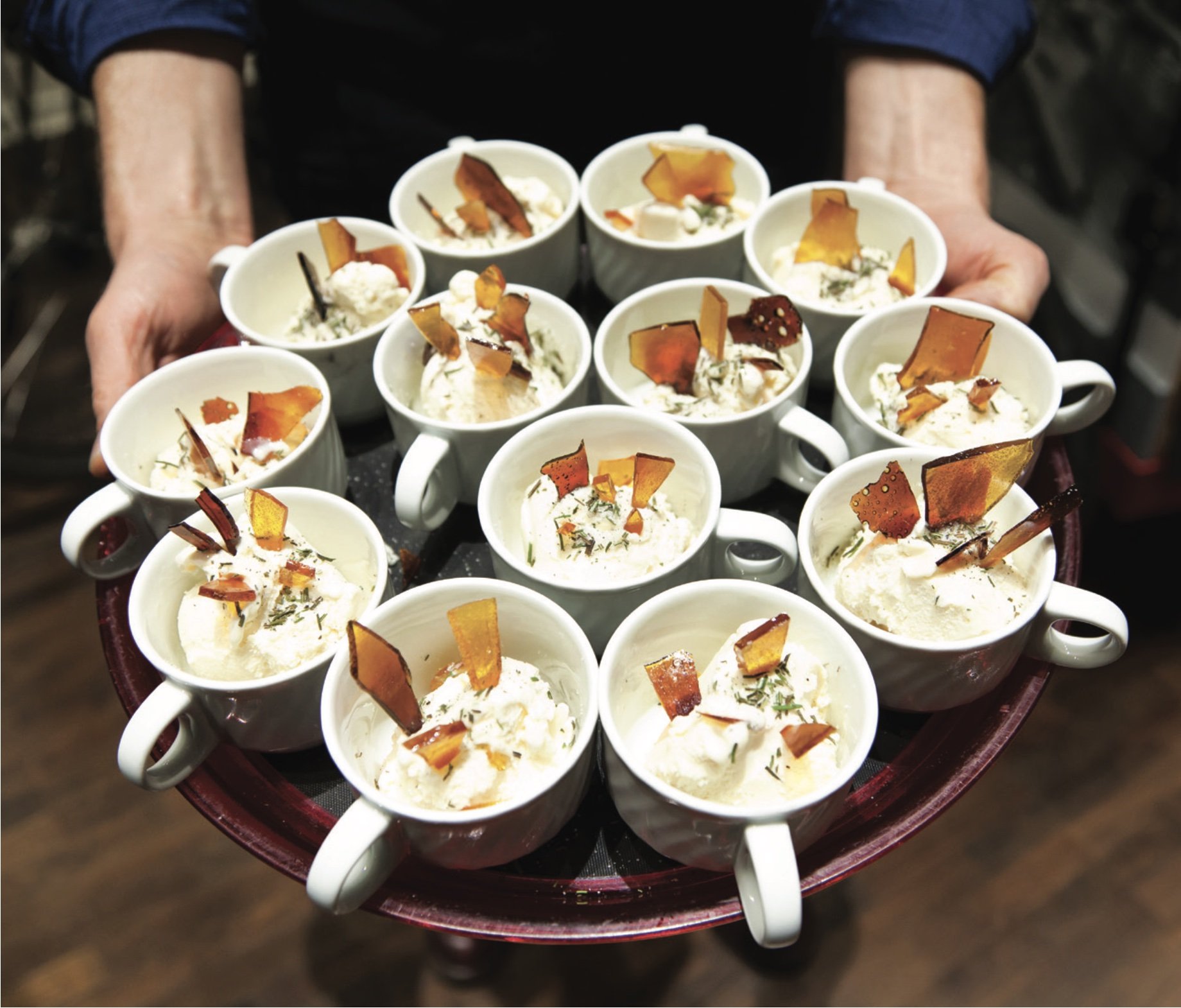TELL ME WHAT YOU SEE and I TELL YOU WHAT YOU EAT
public intervention, willem hack museum/ludwigshafen
2014
*Erik Göngrich and Ece Pazarbaşı Commissioned by Wilhelm Hack Museum, Ludwigshafen.
Erik Göngrich und Ece Pazarbası möchten Sie zu einer Überraschungs-Fahrradanhänger-Tour zu den unterforderten weil kaum genutzten öffentlichen Räumen Ludwigshafens einladen. Während der zweistündigen Fahrt werden wir die versteckten Schönheiten Ihrer Stadt erkunden. Wir werden Geschichten essen und Zeichnungen hören, die Vergangenheit, Gegenwart und Zukunft Ihrer Stadt verhandeln. Die Fahrradtour startet mit der „schönsten Skulptur“ Ludwigshafens und endet mit einem Fünfuhrtee an unserer mobilen Bar, an der wir mit Ihnen gerne zu folgenden Fragen ins Gespräch kommen würden:
Welcher Ort ist für Sie persönlich eine versteckte Schönheit in Ludwigshafen? Welcher hat Potenzial für zukünftige Transformationen Wenn Sie an einer aktiven Rolle im Veränderungsprozess Ihrer Stadt interessiert wären, was wären Ihre persönlichen Werkzeuge, diesen zu gestalten? Gibt es einen Fahrradanhänger, den Sie gerne für das zukünftige Ludwigshafen gestalten würden?
—
“Tell me what you eat.” This is how French politician and gastronome Jean Anthelme Brillat Savarin famously starts his The Physiology of Taste (1825) culinary treatise and continues: “and I shall tell you what you are.” Brillat Savarin extends his discussion towards people’s relationship to food that held clues not only to their social standing and background, but also to deep-seated aspects of their individual character.
If Brillat Savarin was to stumble upon his own saying, with a delicate Freudian slip and end up in “Tell me where you live and I shall tell you what you are” what would be the possible readings of our society? Could it be that urban housing is shaping human being or even influencing their nutrition? Or is it just the other way around? How does the biggest chemical industrial area of Germany (BASF) near one’s domain influence the way of cooking?
Following this path, the project “TELL ME WHATYOU EAT and I tell you where you live” uses enactment of food (as an act of internalization of the exterior) and the architecture (as an act of exteriorization of the internal) as two main tools to dwell upon the issues of sharing, exchange and participation in a community.
Considering food and housing as the most vital signifiers of poverty in a community, with its direct connection to healthy and quality of living; the project aims at creating awareness within a broader society, aspiring to create a sense of well connected community, by urging people from different financial status to leave their own bubbles/planets. It is simply a charming invitation to all to get out of their security zones, and learn more about each other. Leaving one’s cocoon is a crucial act as today in most urban situations the only place to meet is the inside passage of a shopping mall. The project aims at creating a real public place of exchange that allows people to be, meet and cook without consumerism.
On another note, the project uses food and architecture in an artistic manner to foster a new platform to re!understand and re!evaluate the different urban places and their inhabitants that orbits around the economic ‘system’ of the city. While doing that it creates situations of interaction with and between neighbourhoods of the city. As a methodology it picks three culturally diverse neighbourhoods: The center of the city, a location to be selected that is located by the agricultural fields.
